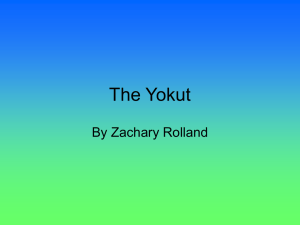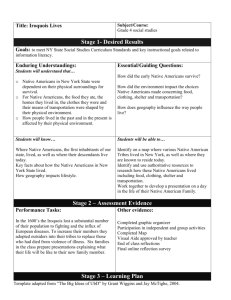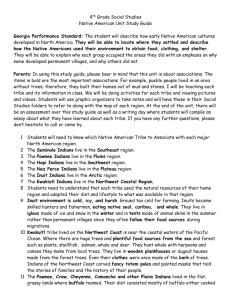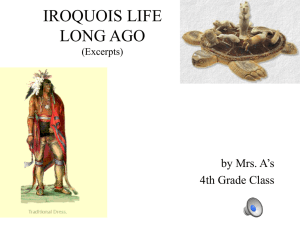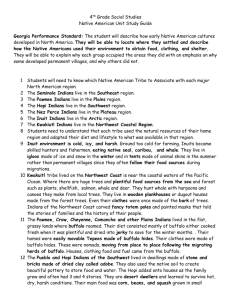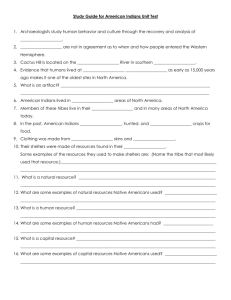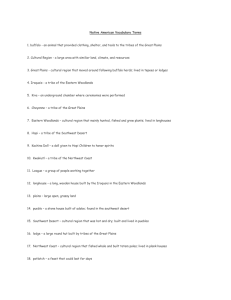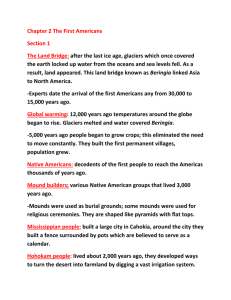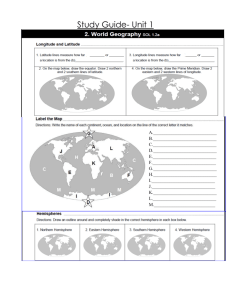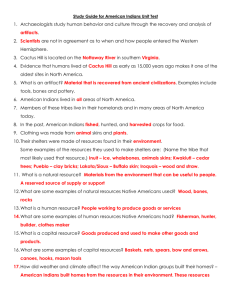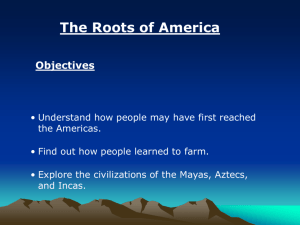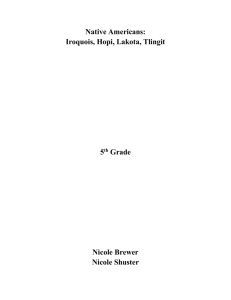Study Notes on Native American Tribes
advertisement
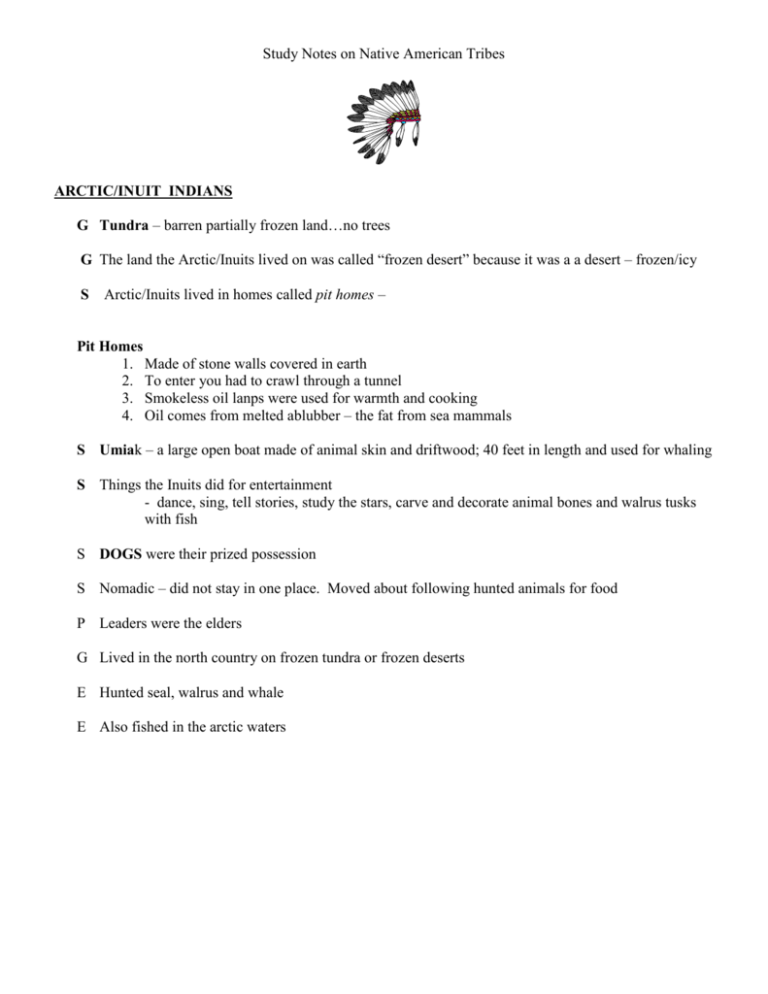
Study Notes on Native American Tribes ARCTIC/INUIT INDIANS G Tundra – barren partially frozen land…no trees G The land the Arctic/Inuits lived on was called “frozen desert” because it was a a desert – frozen/icy S Arctic/Inuits lived in homes called pit homes – Pit Homes 1. Made of stone walls covered in earth 2. To enter you had to crawl through a tunnel 3. Smokeless oil lanps were used for warmth and cooking 4. Oil comes from melted ablubber – the fat from sea mammals S Umiak – a large open boat made of animal skin and driftwood; 40 feet in length and used for whaling S Things the Inuits did for entertainment - dance, sing, tell stories, study the stars, carve and decorate animal bones and walrus tusks with fish S DOGS were their prized possession S Nomadic – did not stay in one place. Moved about following hunted animals for food P Leaders were the elders G Lived in the north country on frozen tundra or frozen deserts E Hunted seal, walrus and whale E Also fished in the arctic waters ANASAZI INDIANS (CLIFF DWELLERS) S Flat head – seen by the Anasazi as a sign of beauty. Children were strapped to a board and carried on their mother’s back while she worked the fields. The board made the back of the head flat. S Kiva 1. A round room dug into the ground 2. Used by the Anastasia to hold religious ceremonies 3. They made their laws here and discussed how to solve problems S Built apartments that rose to 70 stories P Priests - the most important people and sought out for advice by the tribe E Farmers – farmed on flat mountain tops called plateaus G Located in the Southwest part of North America G/E Land was hot and dry and crops often fail E The Anasazi tribe died out due to years of drought and lack of harvest NORTHWEST TRIBE – also known as the SHOW-OFFS S Semi-sedentary meaning they stay in one place part of the time; lived in long houses S Totem Pole – painted and carved images symbolic of a family’s power and rank S Leisure Activities – play acting, dancing, singing, wrestling S Divided into 3 classes: slaves, commoners and nobles S Potlatch – a party that could last for days S Wealthy tribe G Located along the Pacific Coast P Ruled by a chief E Wealthy/affluent tribe. Fished and heated game S Lived in plank houses 40 – 100 feet in length PLAINS INDIANS E Buffalo –Hunted buffalo - important to their economy. They used all parts of the buffalo. They ate the meat and traded buffalo skins for rifles E This tribe was the poorest and hungriest of tribes S Nomadic – that is, they moved from place to place in search of food; no permanent home S Lived in wigwams, made of grass and bark . Some lived in teepees made of animal skin P Shaman – this was their spiritual leader and holy man. G Located mostly in the central plains from Canada to Texas G Weather – very harsh – blizzards, tornados, icy cold or blistering heat, droughts, floods and nice days. IROQUOIS INDIANS E Farmers, Hunters and Gatherers – tribe farmed until the land became dry and the soil grew barren Hunted deer, fox and bear. E Fur-trapping and trading E Iroquois women were excellent farmers S Longhouses – lived in these houses that measured over 150 feet; shared by 8-10 families S Wampum – memory beads used to tell stories and sometimes used for money S Matrilineal Society – this means that the family history was traced through the mom. Iroquois women were leaders of family clans P Sachems – Iroquois chiefs chosen by the Iroquois women P League of the Iroquois – democratic league of 5 Indian nations with a council G Located in the Great Lakes, New York, and the current New England States section G Lived in heavily forested areas
